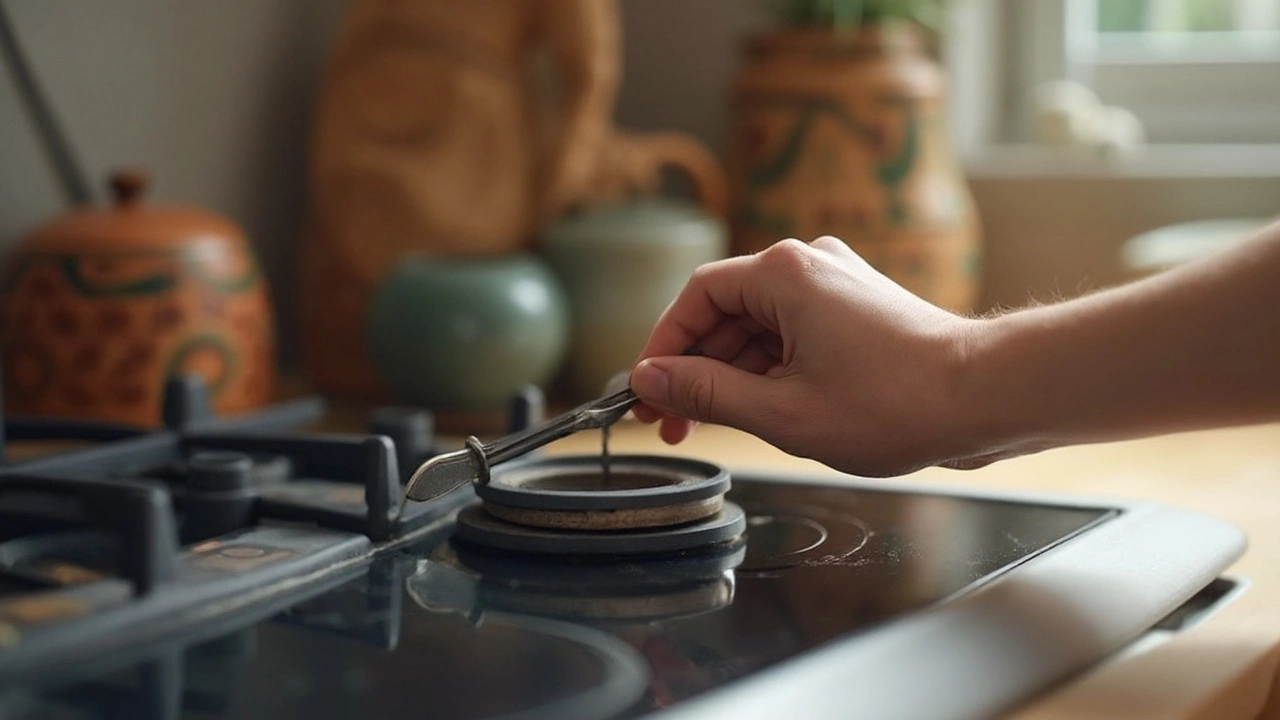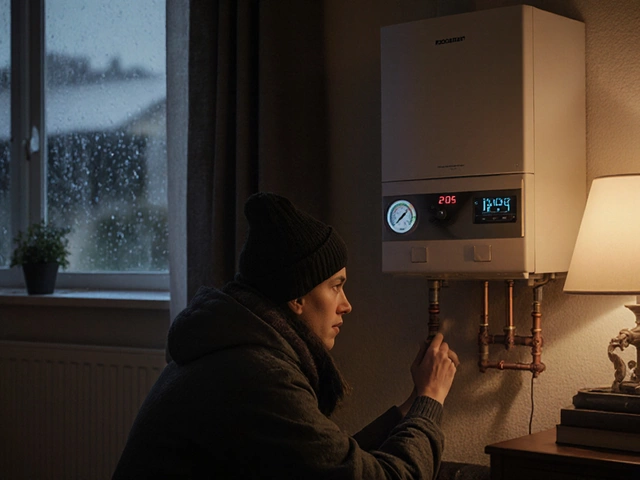So you’re staring at your electric stove, maybe it’s refusing to heat up or that annoying burner just won’t cooperate. Wondering if it’s the end for your trusty cooker, or if you might get it humming again? Here’s a wake-up call: most electric stoves don’t die for good after the first sign of trouble. In fact, they’re often a lot more repairable than, let’s say, your favorite old flat-screen TV. The world doesn’t toss its toasters at the first hiccup, so why treat stoves any different?
How Electric Stoves Actually Work
Electric stoves aren’t mysterious, high-tech gadgets. They’ve got a pretty clear job: turn your power into heat. Under the hood, most models have straightforward wiring, some resistive heating elements, switches, thermostats, and the odd control circuit. In New Zealand homes, you’ll mostly find free-standing electric ranges or built-in cooktops. Both do the same job, just laid out a little differently.
Here’s the wild part: the average electric hob or oven in Kiwi kitchens lasts around 13-16 years, according to Consumer NZ. The bits that most often die first? Burners go first, then switches, occasionally an oven element, and far less often, something like a digital display or thermostat bites the dust. But for the most part, these are all replaceable parts—you’re not dealing with spaceship science here.
Heating elements, for example, are just metal coils, designed to resist electricity and get hot. When they look burnt out, cracked, or simply don’t glow red, it’s a good sign the element itself needs swapping—no need to junk the whole stove. Knobs snap off? Switches get stiff or spin endlessly? Still an easy repair in most cases. Even digital displays and thermostats are modular in most modern stoves, making swap-outs pretty doable if you’re handy with a screwdriver.
If you’re the curious type who likes a peek inside, here’s a quick breakdown of what you’d spot:
- Heating elements (you’ll find these under the glass top in ceramic stoves, or the coiled ones on older stoves)
- Control switches and knobs
- Oven element (usually hidden inside the oven chamber)
- Wiring harnesses connecting everything
- Thermostats and temperature sensors
- Control boards on fancier models
The most surprising fact? Around 70% of ‘dead’ electric stoves are junked for issues that could be fixed without replacing the whole thing. That’s money down the drain and unnecessary landfill waste.
Common Electric Stove Problems and Their Fixes
Not every glitch means a death sentence for your cooker. Here in Auckland, repair techs regularly see a small set of repeat issues with electric stoves. Knowing what they are—and how easy (or tricky) they can be to fix—can save you crazy amounts of cash and stress.
- Burner Not Heating: If one (or all) burners refuse to heat, you might have a blown element, a cooked switch, or a loose connection. Swapping out an element takes ten minutes and a screwdriver. Usually, it’s about $30-60 for a new element, depending on your stove model.
- Oven Not Heating Evenly:
- Display Flickering or Dead: Sometimes it’s the control panel, sometimes just a sticky button or a loose connection. If you have basic DIY skills, you can get a replacement panel from a local appliance store or from NZ online retailers like Trade Me. Parts range from $45 (for basic knob switches) to $160+ for control boards.
- Stove Keeps Tripping the Breaker:
- Unresponsive Controls:
Kiwi appliance repairers—like the local guys over at Consumer NZ’s registered service providers—see these on the regular:
- Individual burner or hotplate not heating
- Whole cooktop won’t power up
- Oven not maintaining temperature or won’t heat
- Weird smells or smoke from under the cooktop
- Digital timers or displays flipping out
Let’s look at two problems up close:
- Busted Element: If you’ve got a ceramic-top stove, the round elements underneath can split or stop working. For classic coil stoves, just pop out the dead coil and fit a new one—no wiring required. For glass-tops, you’ll need to lift the top, but it’s still pretty basic (as long as you turn off the power at the wall).
- Broken Switch: When a burner won’t turn on, sometimes it’s the control knob or underlying switch. Switches for New Zealand models cost anywhere from $15 to $45. Getting at them usually means removing the top panel or a few screws below the knobs. It’s totally possible for a cautious DIYer; just watch some YouTube videos for your brand, and always unplug the stove before touching a thing.
For problems where the wiring looks dodgy, things seem burnt, or the stove keeps tripping your power, get a qualified sparky. Playing with live wires isn’t worth the risk for a quick fix. According to New Zealand law, you can’t mess with fixed wiring without a registered electrician.

Is It Worth Repairing, or Time to Replace?
This is the big question that trips up most people. Do you spend money fixing up the old faithful, or call it quits and start shopping for a shiny new cooker?
A few numbers help put things in perspective. According to Canstar NZ, the average price for a new free-standing electric stove is $950-$1800, while individual repairs usually cost between $80 (for simple part swaps) and $280+ (for bigger jobs involving control boards or thermostats).
| Stove Problem | Typical DIY Repair Cost (NZD) | Pro Repair Cost (NZD) | Time Needed |
|---|---|---|---|
| Replace Element or Coil | $30 - $70 | $80 - $170 | 10–40 min |
| Switch/Knob Faults | $15 - $45 | $90 - $160 | 15–30 min |
| Control Board Replacement | $160+ | $200+ | 1-2 hours |
| Thermostat/Oven Sensor | $55 - $90 | $120 - $200 | 30–60 min |
If your stove is less than ten years old and the fix is under $300, repairs almost always make sense. If the repair will cost more than half of what a new stove does—or if it’s the third big fix in a year—you’re probably throwing good money after bad.
Another thing people forget is the hassle and cost of getting rid of the old stove. In Auckland, junking an appliance can cost $70+ for pickup and disposal. Sometimes it’s easier (and cheaper) to swap a part and keep cooking.
But there’s a line: if your stove’s wiring is burned, if the cooktop glass is cracked, or if your model is so old that spare parts are almost impossible to find (think pre-2000s), it might be smarter to retire it. Newer stoves are more efficient and way safer too.
DIY vs. Professional Repair: What’s Safe (and What’s Not)?
Lots of folks are tempted to tackle electric stove repairs themselves. It can be very doable, and plenty of Kiwis love a good fixer-upper challenge. Here’s the catch—electric stoves run off 230 volts, so it’s not a job for the reckless. If you stick to swapping burn-out rings, elements, or loose knobs you’re pretty safe. But once you get into rewiring, fixing the control board, or anything near the main power feed, that’s when you should call a licensed electrician.
New Zealand’s electrical regulations are pretty clear: you can’t touch the hardwired connections. But, you can unplug a stove, open the access panel, and change a user-replaceable element or knob as long as you’re not altering the wiring. Swapping out an element is basically like changing a light bulb—just don’t take chances. Turn off everything at the wall, keep hands dry, and use insulated tools if you have them.
If your stove’s hardwired (with no plug), you need an electrician no matter what. For anything tricky—even replacing oven sensors or advanced electronics—it’s worth the peace of mind. According to MBIE (NZ’s Ministry of Business, Innovation and Employment), sparky’s visits cost an average of $105-$140/hour, but safety is priceless.
If you decide to call in a pro, ask for a quote upfront. Most appliance repairers in Auckland will diagnose the problem for about $70-$95, which they’ll usually put toward your final bill if you go ahead with the fix.
Here’s how to tell what’s safe to DIY (and what’s not):
- If the part comes out with a screwdriver and no wiring is touched, it’s probably safe
- If it looks like burnt wires or melted plastic, step away and call a pro
- If the stove’s wired direct into the wall, don’t touch—get an electrician
Pro tip: always snap a photo of the connections before you disconnect anything. This way, you’ll avoid a classic "where did this wire go?" panic later.

How to Keep Your Electric Stove Running Longer
Let’s face it, most of us don’t baby our appliances. But a little love goes a long way if you want your electric stove to last. Here are some real-deal tips from Auckland’s top repair techs—and a couple of things you should never do if you value your stove’s lifespan.
- Clean spills ASAP—especially sugary sauces. Left long enough, they burn into the elements or cooktop, causing premature failure.
- Use the right pans! Flat-bottom cookware ensures even heating and puts less strain on elements.
- Don’t bang or drop heavy pots onto ceramic glass. Chips and cracks mean expensive repairs—or a full replacement.
- Check the elements every few months for warping, cracks, or corrosion. Catch worn parts before they fail and you’ll save on repairs.
- If your stove has indicator lights or digital displays, keep them clean and dry. Sticky buttons or moisture can short out the board.
- Let elements cool before cleaning, and avoid harsh chemicals—gentle cleaners keep everything working longer.
- Have your wiring checked if you get repeated breaker trips or odd smells. Don’t ignore signs of dodgy electrics—a quick check could prevent a fire.
Random but true: most brands publish free troubleshooting charts on their websites. Electrolux, Westinghouse, and Fisher & Paykel have some of the best DIY guides (with part numbers) out there.
One more tip—save your model and serial number somewhere easy to find. You’ll need it for any repairs or parts ordering, and finding it under a greasy oven can be a pain!
To wrap it up, yes, an electric stove is often absolutely repairable. Knowing when to fix it yourself, when to call in a pro, and how to give it a little TLC can save you stress and money—and keep dinner on the table for years to come.




